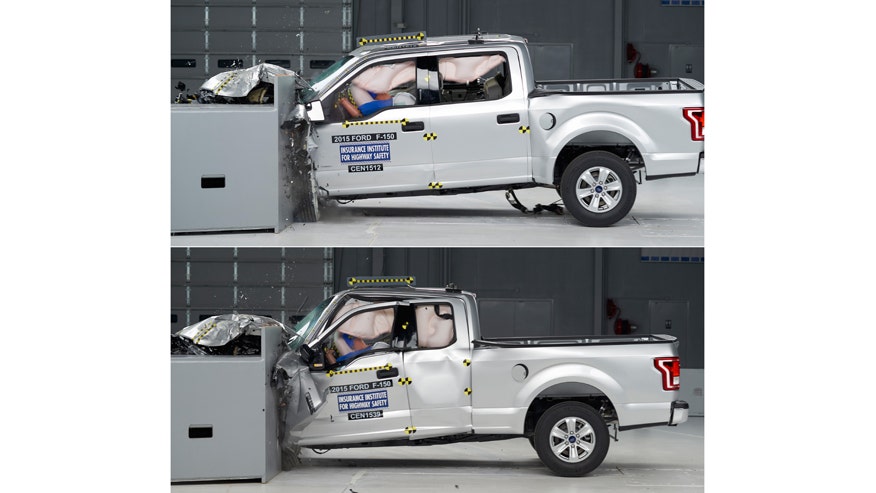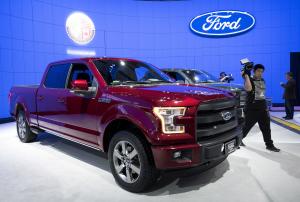
DETROIT (AP) — Ford's new aluminum-sided F-150 pickup saw mixed results in new crash tests by the insurance industry, and the damaged trucks cost more to repair than steel-bodied ones.
But the Super Cab version, which has a smaller rear door and back seat, did poorly in a small front overlap test, which slams 25 percent of the front of the truck into a barrier at 40 miles per hour. It didn't earn the top safety award.
The Insurance Institute also said it took longer for a local Ford dealer to repair the aluminum truck than an older steel one, and the aluminum parts cost more. The institute said the repair costs were 26 percent higher for the aluminum-bodied truck.
In a statement, Ford said the new truck is the "safest F-150 ever" and noted that it has the government's highest five-star safety rating. But the company said it will make a design change in the 2016 model year to improve the crash performance of the Super Cab and Regular Cab models.
Ford said the Super Crew — which got the top safety award — accounts for 83 percent of all F-150 sales. The Super Cab makes up around 12 percent and the Regular Cab accounts for 5 percent.
Ford spokesman Mike Levine also said independent consultants have shown that average repair costs for the new truck are less than for the old truck.
The results are a key test for Ford, which switched from steel to aluminum for the body of the truck late last year. The switch makes the truck lighter and nimbler and saves fuel, but it was risky, since the F-150 is the first mass-market vehicle make such a change. The F-150 has been the best-selling vehicle in the U.S. for more than three decades.
David Zuby, IIHS's chief research officer, said the organization tested the F-150 first because there is so much interest in the aluminum body. Competitors from Chevrolet, Toyota and others will be tested this fall, he said. The small front overlap test was added in 2012, he said, so the F-150 was the first truck to go through it.
Zuby said the aluminum on the F-150 was strong and safe and performed well. Differences in the steel frame under the aluminum resulted in the different test outcomes. The Super Crew version had extra, horn-like pieces of steel fitted to the front of the frame to help the vehicle absorb the force of the small overlap crash. The Super Cab and the two-door Regular cab — which the institute didn't test — don't have those extra pieces of steel, but will get them in 2016 versions.
The Super Cab truck got "good" ratings on four other tests, including roof strength, side impact and a moderate frontal test, which hits a larger portion of the vehicle into a deformable barrier that's meant to replicate another vehicle. But in the small overlap test, the front compartment crumpled and the crash dummy's head missed the side air bags and hit the instrument panel.
Ford's trucks didn't get the institute's highest safety rating — "Top Safety Pick Plus" — because they don't have automatic braking systems to prevent collisions. They do have a front collision warning system, but it doesn't have automatic braking. LINK



